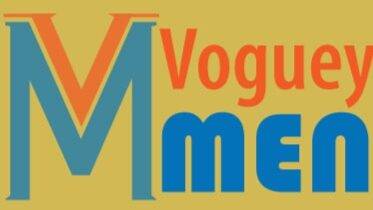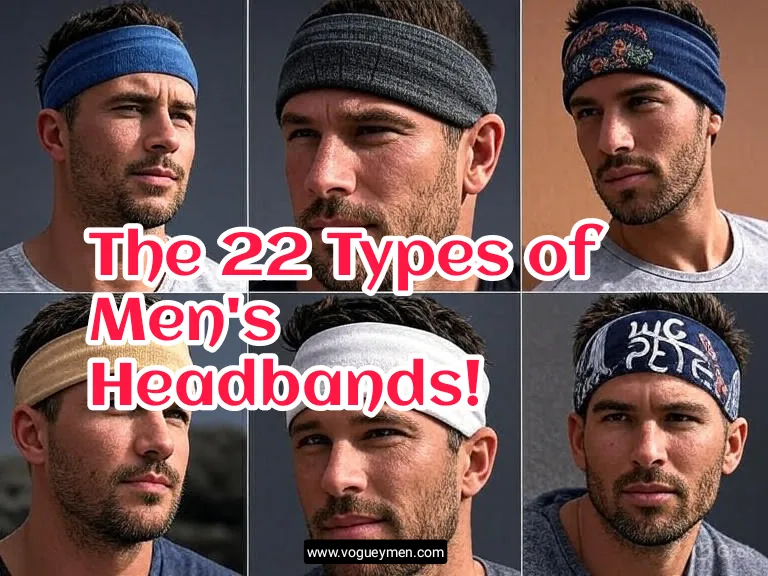Move over sweatbands—the types of men’s headbands have evolved far beyond just mopping your brow at the gym or taming your post-shower mane. Today, headbands are having a moment, and frankly, it’s long overdue. They’re not just practical anymore—they’re power moves. Whether you’re channeling streetwear confidence, yoga-class calm, or tribal warrior energy, the right headband doesn’t just hold your hair—it holds attention.
Modern headbands do their job—yes, they keep sweat in check and hair out of your face—but they also spice up your style and amp up your outfit with minimal effort. Some are sleek and sporty, others bring street-cool edge or casual nonchalance. And then there are the truly timeless ones: ancient, exotic, and still worn today with pride and purpose.
So if you thought headbands were just for tennis dads or 2000s pop stars… think again. We’re about to dive into 23 distinct types of men’s headbands—from minimalist to maximalist, gym-ready to runway-worthy, and everything in between.
Grab your metaphorical helmet—this isn’t just a list, it’s a cultural ride across centuries, subcultures, and sweaty foreheads. Let’s get into it.
The 22 types of men’s headbands
1. Head Sweatband or Sports Hairband
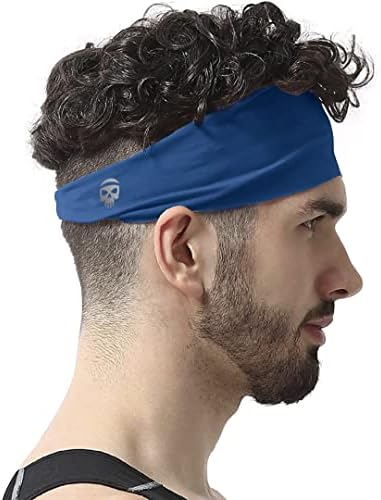
The classic sweatband is a thick, absorbent strip of fabric—usually terry cloth or stretch cotton—worn snug across the forehead to soak up perspiration and prevent it from dripping into the eyes. Often tubular or flat in structure, it’s functional to its core and widely used in athletics and high-intensity sports. Its form prioritizes fit and moisture control, though many modern versions feature branded logos, giving them crossover appeal in streetwear and gym fashion alike.
2. Alice Headband or Metal Claw Headband
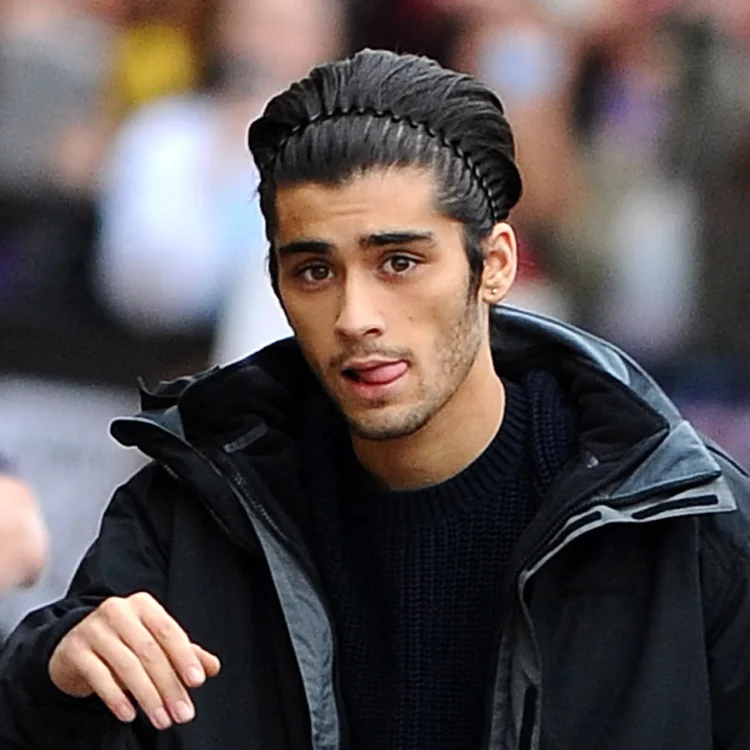
Traditionally a rigid U-shaped band, the Alice headband fits over the top of the head and behind the ears, pressing gently to hold the hair back. Men’s versions often come in black plastic, metal, or acetate, with minimal design. The “claw” variant includes inward-facing teeth to grip the hair more securely. Originally popular in grooming, this style is now widely adopted by men with mid-to-long hair seeking a clean, sleek, and fuss-free look.
3. Retro Striped Tennis Headband
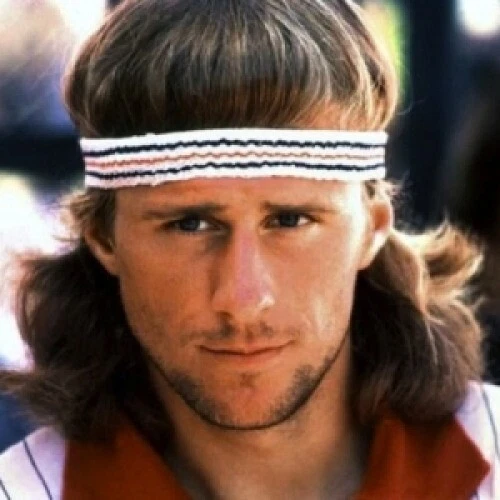
This headband is instantly recognizable by its flat terry structure and horizontal tricolor stripes—most famously red, white, and navy, popularized by brands like Fila. A medium-width band, it hugs the head to absorb sweat while doubling as a bold fashion statement. Once standard gear in 1970s–80s tennis, it now rides the wave of retro revival in streetwear, offering athletic flair with vintage charm. It’s both nostalgic and sharply stylish.
4. Earwarmer Headband
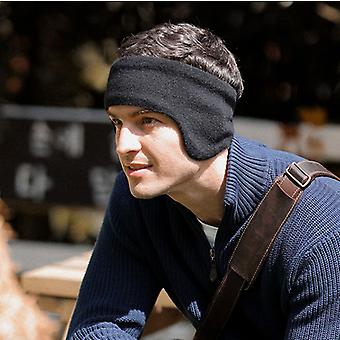
The earwarmer headband is a thick, often fleece-lined or wool-blend band that wraps around the head and fully covers the ears, providing warmth in cold weather. Usually seamless or stitched flat, it’s contoured to stay secure during outdoor activities like running, hiking, or winter sports. Unlike purely athletic headbands, this one emphasizes insulation and coverage. Some versions are reversible or feature wind-blocking panels, making it a favorite in cold-climate casualwear.
5. Knit Headband or Knitted Headwrap
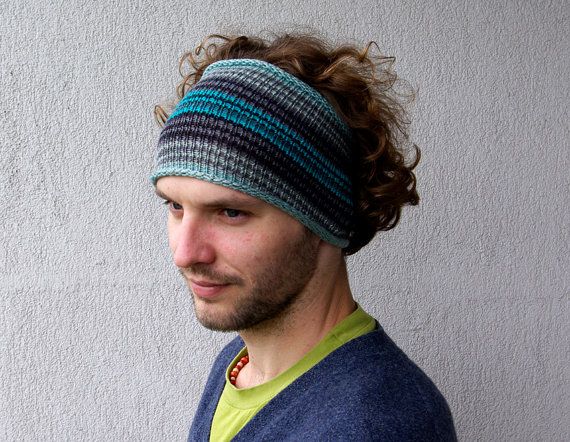
A cozy, textured alternative to sleek athletic bands, the knit headband is a wide, often chunky wrap made from wool or acrylic yarns. It covers a good portion of the forehead and sometimes the ears, often with a twist or faux-knot at the center. Popular in autumn and winter menswear, it adds warmth while offering tactile appeal. Though primarily functional, it’s also a stylish accessory that brings a rugged, handcrafted edge to casual looks.
6. Biker Headwrap or Do-rag
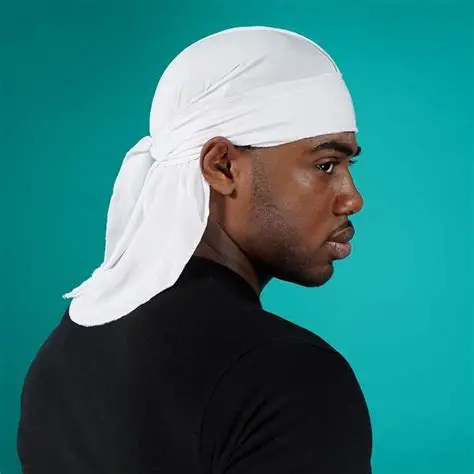
A do-rag (or biker headwrap) is a fitted piece of cloth—usually cotton or polyester—tied at the back, designed to cover the crown of the head and hold hair in place. Its silhouette is smooth and close to the scalp, with long ties that secure it firmly. Common in motorcycle culture as a helmet liner, hip-hop fashion, and Afrocentric grooming, it protects the hair from wind, helmet friction, and environmental stress. Its aesthetic ranges from utilitarian to subcultural cool. image source
7. Graphic Headband
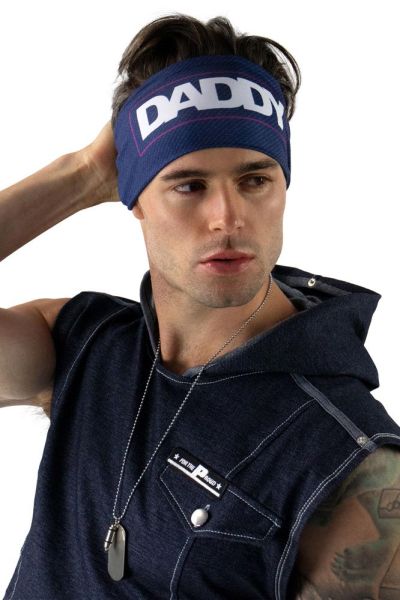
This modern headband style features bold printed graphics, patterns, or logos and is typically made of stretchy, performance fabric. Medium in width and snug-fitting, it serves both aesthetic and practical functions—keeping hair back while acting as a visual statement piece. Commonly seen in gym culture and influencer-driven fashion, it merges branding with utility. Think of it as a headband that’s not just worn—it’s read, photographed, and hashtagged.
8. Bandana Headband
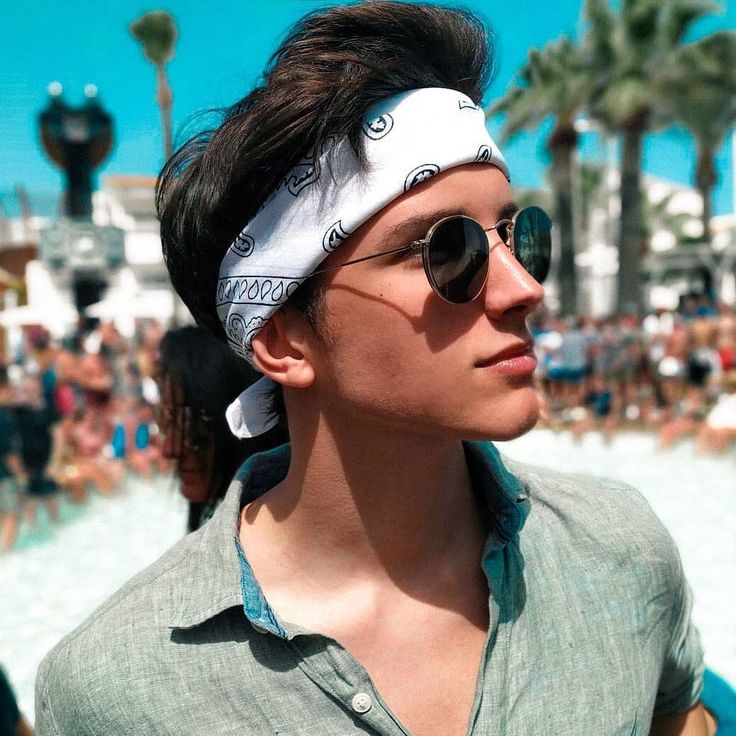
The bandana headband is a classic square or rectangular cloth—usually cotton—folded diagonally into a strip and tied around the forehead, knot at the back or side. It’s a versatile, DIY-style piece used in workwear, rock fashion, and urban street style. Its loose ends and bold prints (paisleys being the most common) give it a raw, rebellious flair. It’s equal parts cowboy grit, 1980s rocker, and skater nonchalance. Image source: Alfonso Boada
From a rugged headwrap to an impromptu tote, the bandana’s incredible versatility shines through its 16 stylish ways—proof that a simple square of fabric can be the Swiss Army knife of fashion.
9. Boho or Hippie Headband
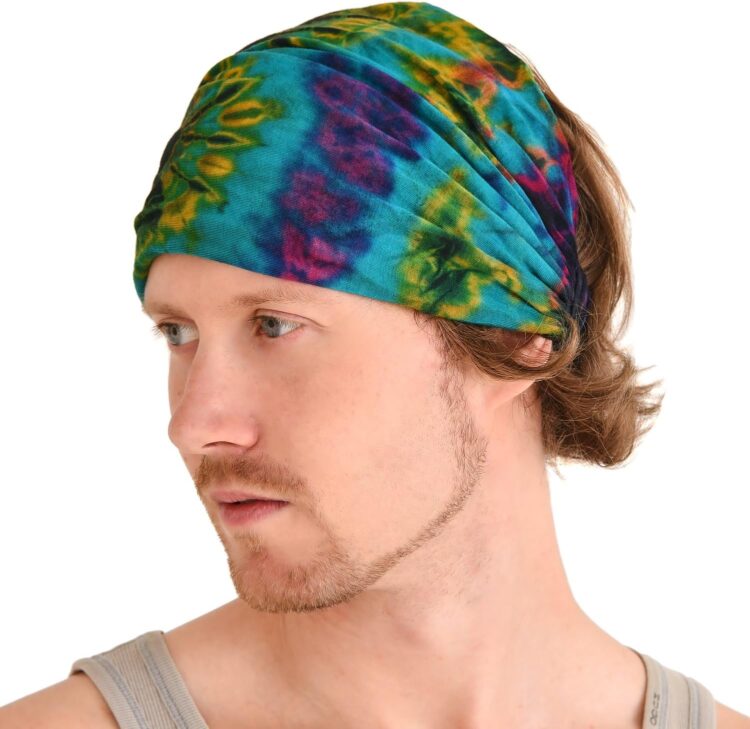
Worn low across the forehead rather than over the crown, the boho headband is often a thin, elasticized cord or a braided textile strap. Its defining feature is its positioning—horizontal rather than vertical—and its decorative flair, often featuring beads, feathers, or leather. Popularized in the 1960s–70s counterculture, it still shows up in indie festivals and bohemian-inspired outfits, symbolizing carefree, nonconformist style.
10. K-pop Headband
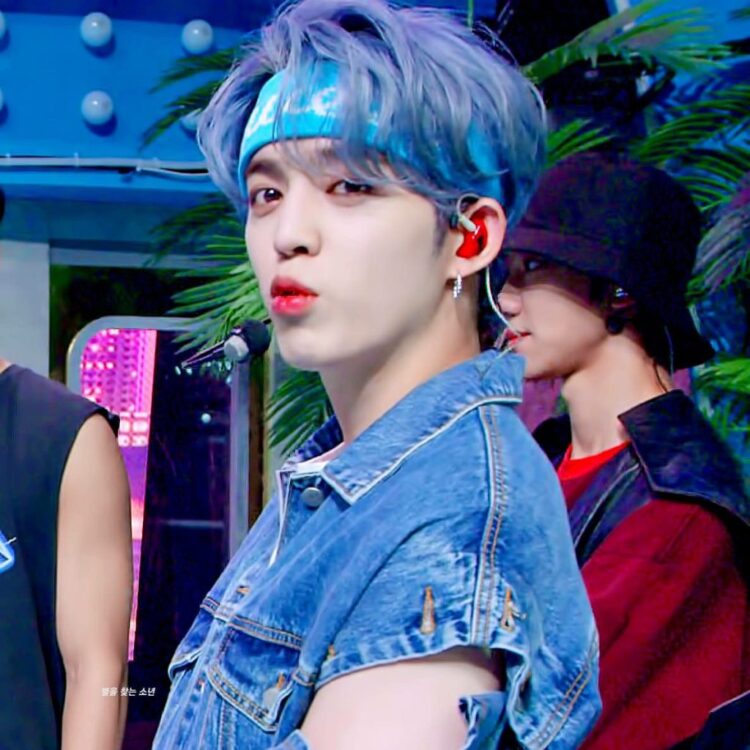
Borrowed from Korean pop culture and idol fashion, the K-pop headband is typically a soft, plushy or decorative band—sometimes featuring quirky elements like cartoon ears, slogans, or symbols. Structurally, it’s a simple elastic band, but visually it’s playful and bold. Worn by male idols during rehearsals, fan meets, or airport looks, it blurs gender lines and adds charm. Increasingly, fans adopt the look for everyday styling, infusing fun into casualwear.
11. Knotted or Twisted Headband
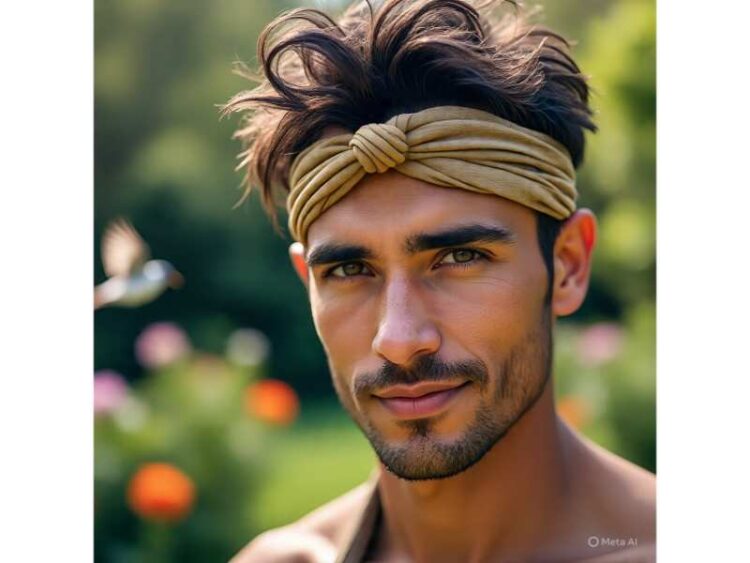
The knotted headband features a prominent, raised knot or twist at the center, offering a sculptural detail that sets it apart from flat bands. It’s often made of cotton, velvet, or jersey material and can be structured or floppy. This style bridges the gap between fashion and function—taming hair while creating a focal point on the forehead. Though inspired by vintage women’s styles, modern versions have been adapted into unisex and men’s streetwear aesthetics.
12. Yoga Headband
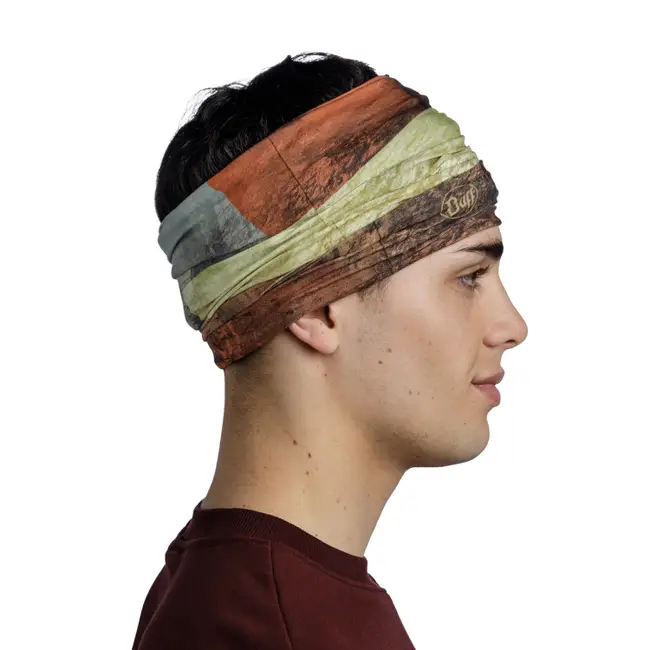
Usually made from soft, stretchy, moisture-wicking fabric, the yoga headband is a wide band worn snugly to keep hair out of the face during stretching, movement, or meditation. It typically hugs the crown of the head and may taper at the nape for a sleek fit. Prioritizing comfort and flexibility, this headband type blends sporty minimalism with wellness aesthetics, and is increasingly popular outside the studio for relaxed, mindful fashion looks.
13. Fur Headband

The fur headband is a luxurious, winter-specific accessory crafted from faux or real fur and designed to cover the forehead and ears. Wide and plush, it often has an elasticized back or clasp for a secure fit. While its primary function is insulation, it doubles as a fashion statement in colder climates. The aesthetic is elegant yet bold, often seen in Eastern European or vintage military-inspired outerwear.
14. Bunny Ear Headband
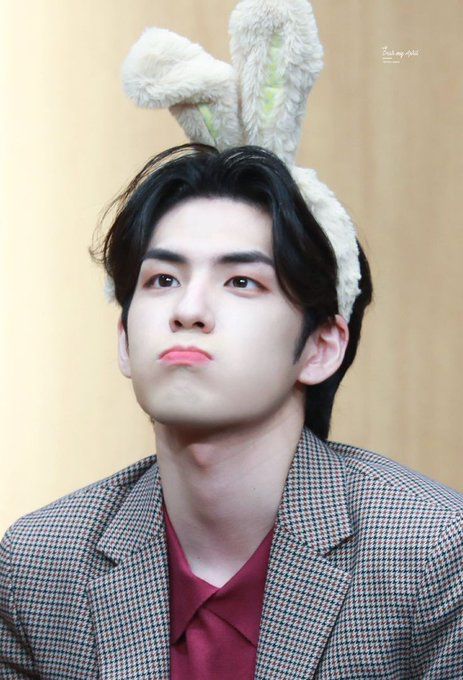
A whimsical, fashion-forward style, the bunny ear headband features extended “ears” formed by wire inserts or tied fabric ends. The structure is typically a soft band with flexible components that allow the wearer to shape the “ears” upright or into bows. Popular in K-fashion, youth trends, and gender-fluid styling, it adds personality and cheek to casual or expressive outfits. More playful than practical, it’s meant to be noticed.
15. Hachimaki or Ninja Headband (Japan)
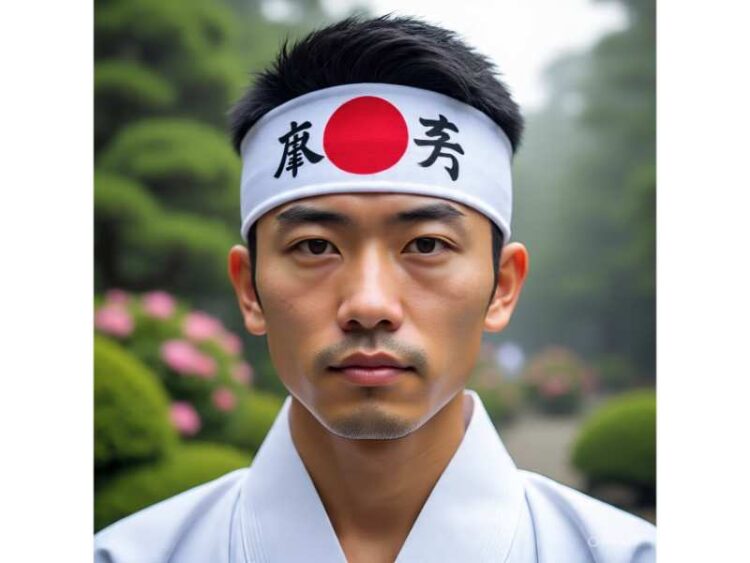
The hachimaki is a traditional Japanese headband—a flat, rectangular strip of cloth tied around the forehead, with a knot at the back. Typically worn by men as a symbol of perseverance, focus, or warrior spirit, it often features bold kanji slogans like “Victory” or “Spirit” printed across the front. Its origins lie in samurai and laborer culture, and it remains a cultural staple in festivals, martial arts, and anime-inspired fashion.
16. Tenugui Headband (Japan)
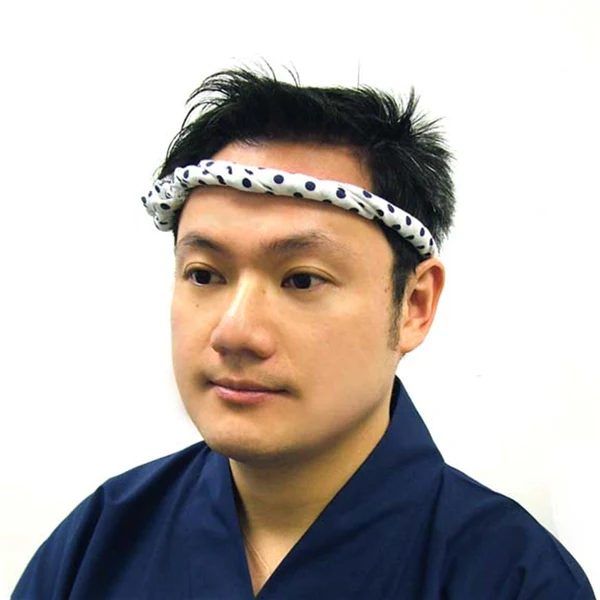
The tenugui is a multipurpose Japanese cotton cloth, often used as a headband when folded lengthwise and tied at the back. Unlike the structured hachimaki, the tenugui is softer and longer, with frayed edges and hand-dyed patterns ranging from minimalist to ornate. While traditionally utilitarian—worn by artisans, chefs, and martial artists—it also appears in modern reinterpretations of traditional dress and cosplay. Its versatility makes it both practical and culturally resonant.
17. Hanfu Ribbon Headband (China)
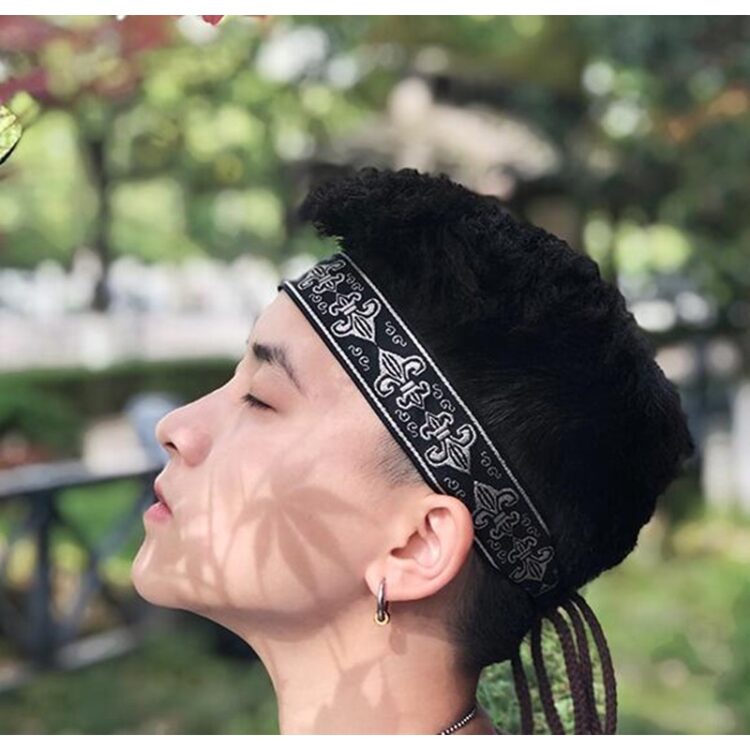
Worn with traditional Chinese hanfu attire, this headband is typically a long silk or satin ribbon, either tied around the forehead or woven through the hair. Though more decorative than utilitarian, its placement mirrors that of a modern headband. Often adorned with tassels or embroidery, it complements ceremonial or theatrical hanfu outfits. While not widely used today, it remains an integral part of historical reenactments, traditional dance, and Chinese opera costumes.
18. Agal or Iqal Headband (Arabian Peninsula)

The agal is a black corded headband traditionally worn by men in the Arabian Peninsula to secure the shemagh or ghutra (headscarf) in place. Typically made of two thick, double-looped cords, it rests atop the head, anchoring the folded scarf with understated dignity. Though minimal in structure, it carries deep cultural meaning, symbolizing heritage, status, and masculine honor in Gulf and Levantine societies. It remains a staple of traditional Middle Eastern dress.
19. Turban Headband
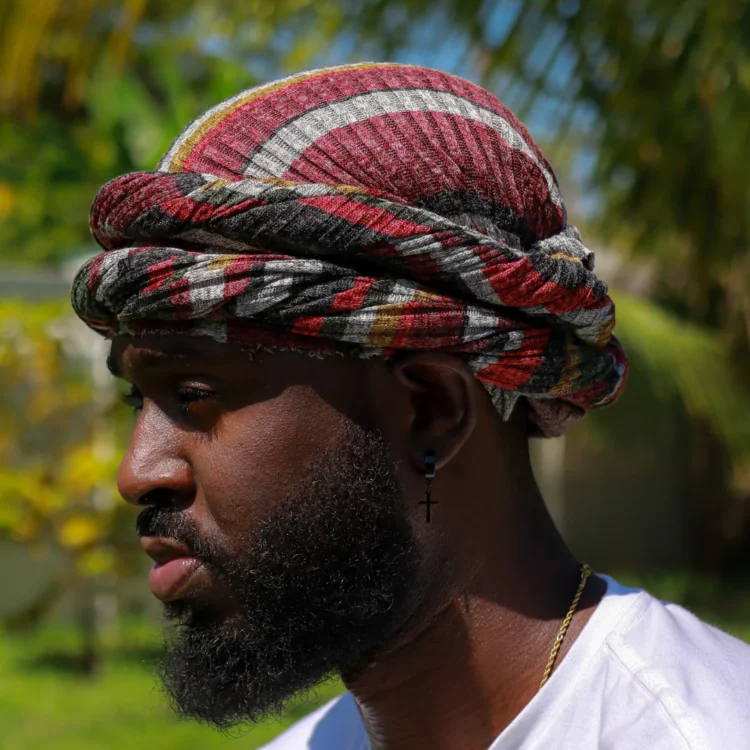
Distinct from full turbans, the turban headband is a wide, often twisted or ruched band that mimics the look of wrapped fabric. It usually has a central knot or crisscross at the front, giving it volume and shape. While rooted in vintage and South Asian influences, modern versions are reimagined for casual wear, especially in fashion-forward and artistic circles. It blends cultural reference with bold style and often complements longer hair or layered outfits.
20. Shipibo-Conibo Beaded Band (Peru)

This headband is crafted by the Shipibo-Conibo people of the Peruvian Amazon, using intricate beadwork to form hypnotic, geometric patterns. Worn during rituals and daily life, it is structured as a flat, beaded strip tied or clasped around the forehead. The designs reflect deep spiritual symbolism, often linked to ayahuasca visions and cosmology. Though traditional, these bands are sometimes adapted in modern festival or shaman-inspired fashion, showcasing Indigenous Amazonian identity and artistry.
21. Xhosa Headband (South Africa)
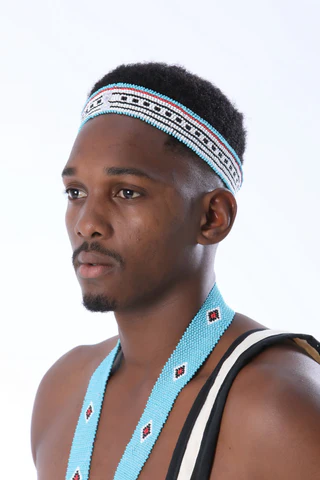
The Xhosa headband, typically worn by men during ceremonial or initiation rites, is a cloth-based band that wraps across the forehead. Made from woven or stitched fabric, it often coordinates with traditional isikhakha garments and beadwork. Though understated compared to other African headdresses, it signifies transition, maturity, and identity within the Xhosa culture of South Africa. Today, it is still worn during rites of passage and cultural performances.
22. Zulu Headband (South Africa)
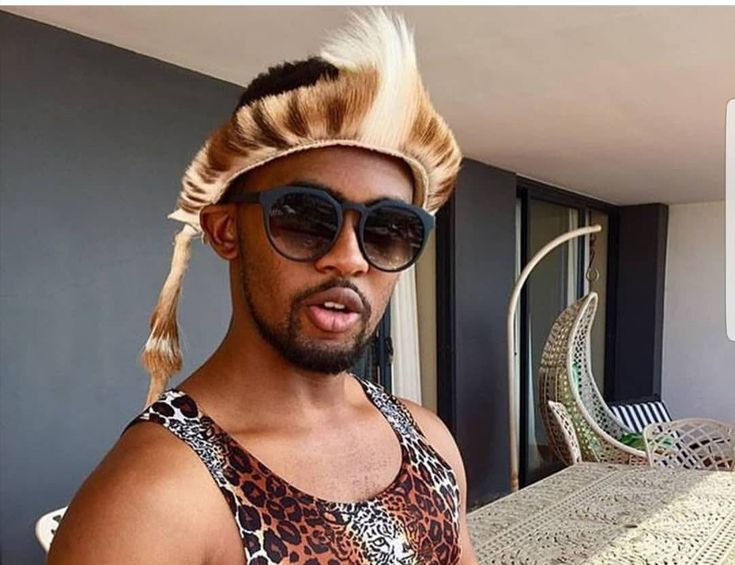
Worn by Zulu warriors and ceremonial performers, this headband is typically a firm, circular band made of leather, fiber, or fur. Sometimes adorned with cowrie shells or feathers, it’s positioned firmly above the brow. Functionally, it serves to hold hair in place during dance and ritual, but symbolically, it reflects courage, strength, and tribal pride. It remains part of traditional regalia in South African celebrations and heritage events.
